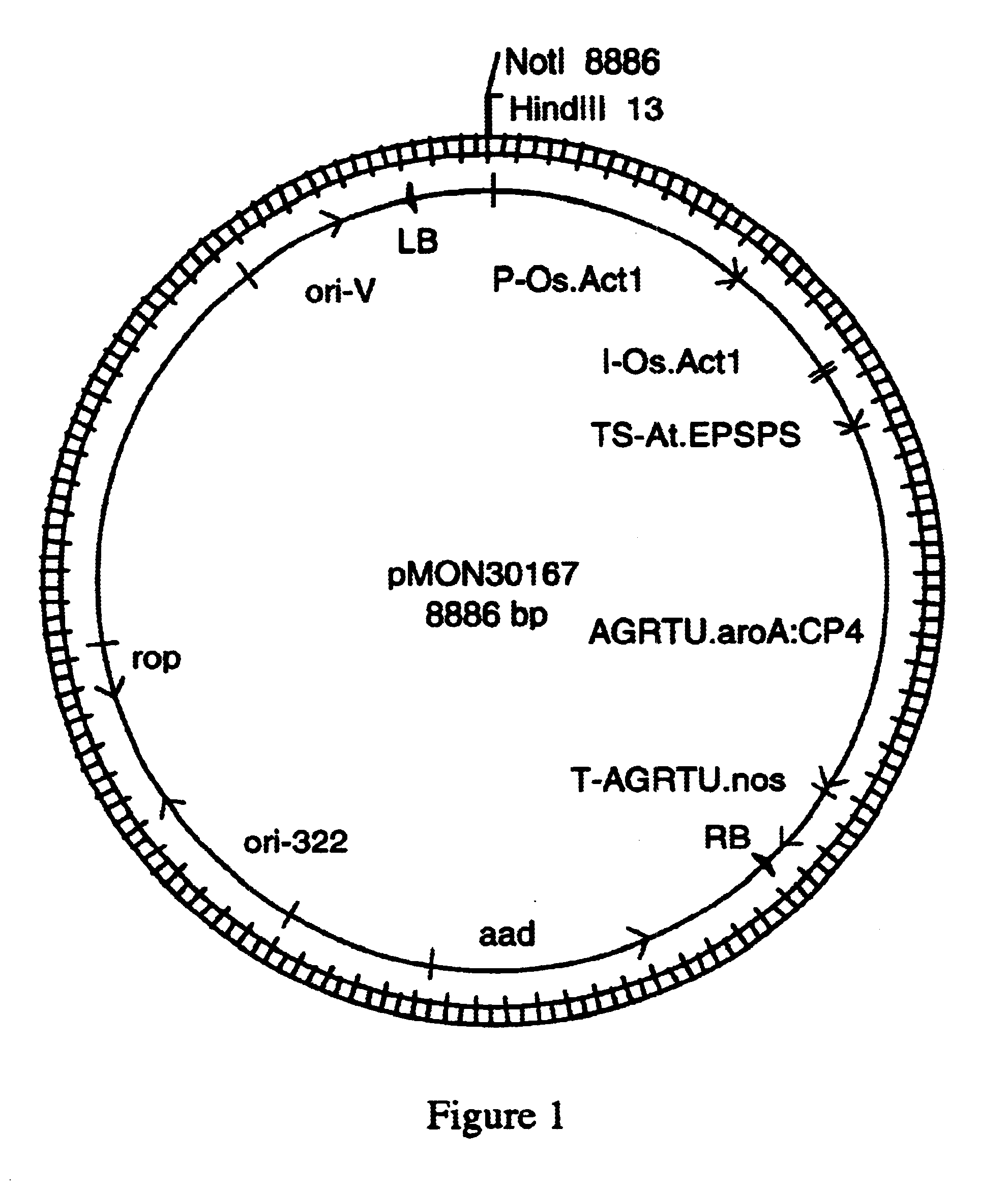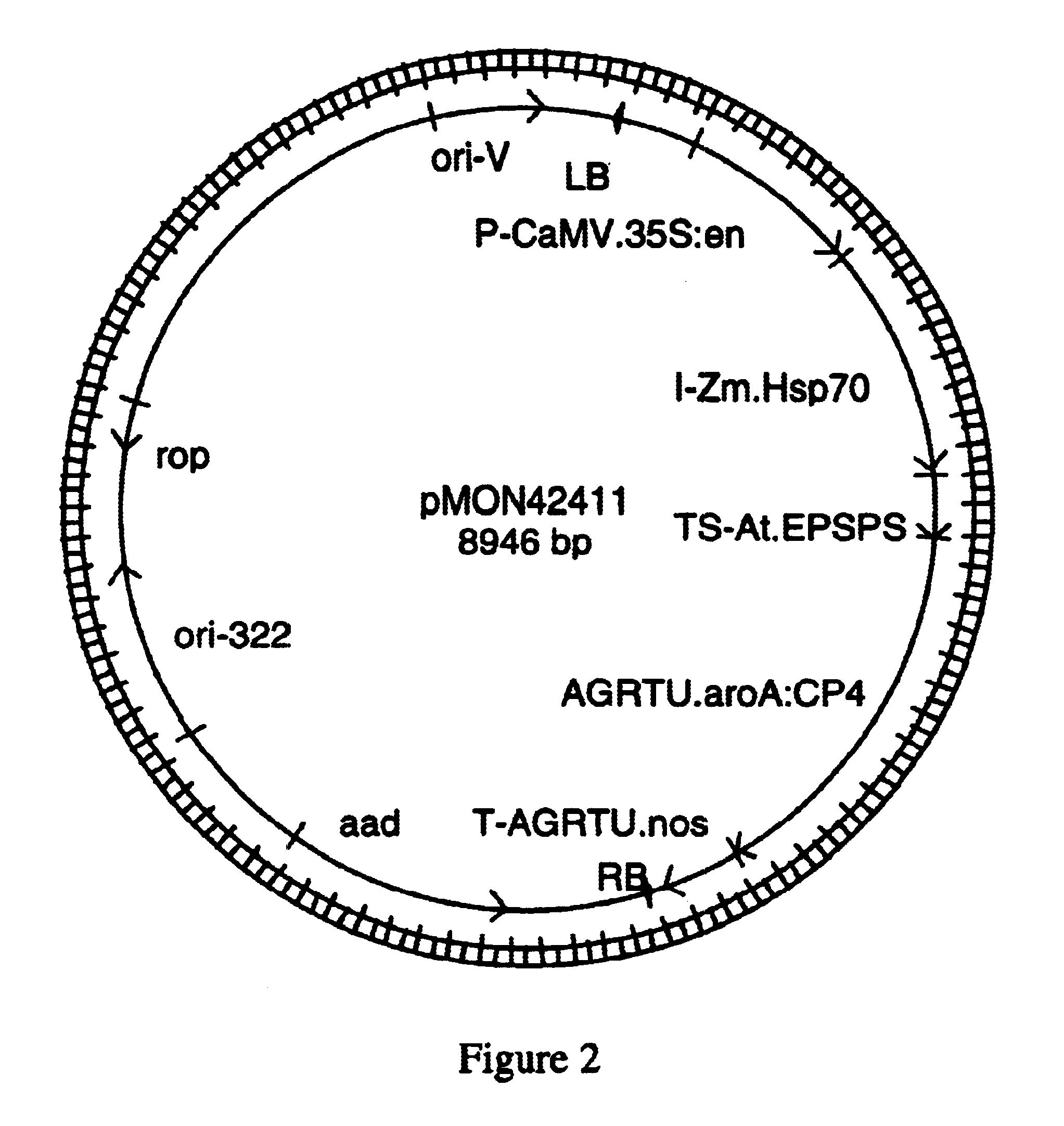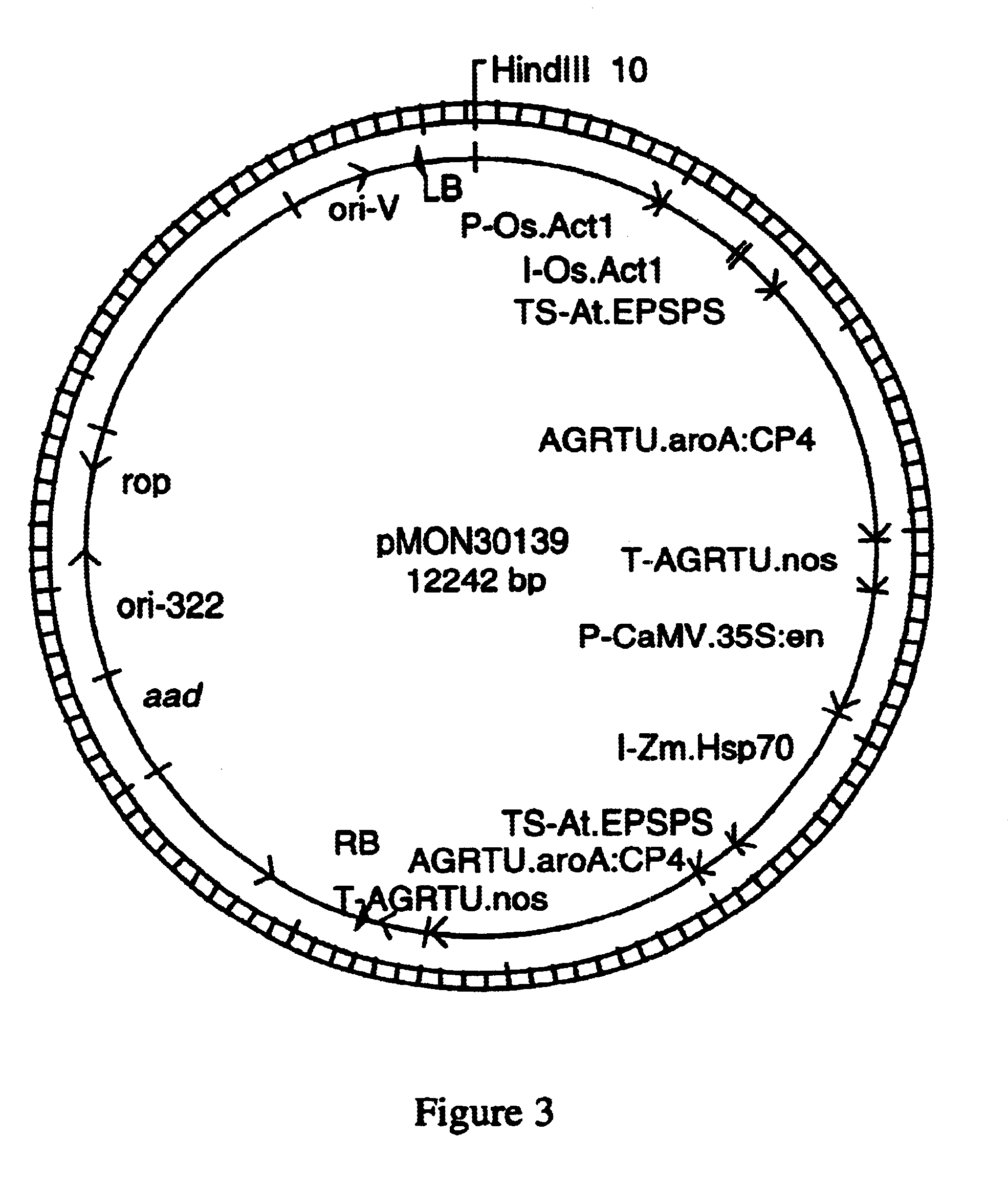DNA molecule for detecting glyphosate tolerant wheat plant 33391 and progeny thereof
a technology of dna molecule and wheat plant, which is applied in the field of plant molecular biology, can solve the problems that the method may not be useful in discriminating between different events, and achieve the effect of improving the tolerance to glyphosate herbicid
- Summary
- Abstract
- Description
- Claims
- Application Information
AI Technical Summary
Benefits of technology
Problems solved by technology
Method used
Image
Examples
example 2
Isolation of the corresponding wheat genomic flanking sequence is possible by a variety of methods known to those skilled in the art (for example, using the ligated adapters and nested PCR as described in the Genome Walker.TM. kit, (CloneTech Laboratories, Inc, Palo Alto, Calif.). Genomic DNA from the wheat 33391 was isolated by CTAB purification method (Rogers et al., Plant Mol Biol 5:69-76, 1985). Reagents are available commercially (see, for example Sigma Chemical Co., St. Louis, Mo.). The genomic DNA libraries for amplification were prepared according to manufacturer instructions (Genome Walker.TM., CloneTech Laboratories, Inc, Palo Alto, Calif.). In separate reactions, genomic DNA was subjected to restriction enzyme digestion overnight at 37.degree. C. with the following blunt-end endonucleases: DraI, EcoRV, Pvu II, Sca I, and Stu I (CloneTech Laboratories, Inc. Palo Alto, Calif.). The reaction mixtures were extracted with phenol:chloroform, the DNA was precipitated by the addi...
example 3
The expression of the glyphosate resistant EPSPS protein (CP4 EPSPS) from aroA:CP4 gene can be detected by immunological methods (Rogan et al., Food Control 10:407-414, 1999, herein incorporated by reference in its entirety) from plant tissue extracts. Immunological methods such as western blots, strip tests, and enzyme linked immunosorbent assays (ELISA) have been developed to specifically detect the protein expressed from the aroA:CP4 gene contained in plant expression vectors transformed into plants. Reagents that include the polyclonal and monoclonal antibodies specific for the CP4 EPSPS are commercially available from Strategic Diagnostics (Newark, Del.). CP4 EPSPS can be detected from protein extracts of wheat 33391 plants, plant parts and seeds by immunological methods that include ELISA.
An ELISA procedure that uses 100 ng of monoclonal anti-CP4 EPSPS antibody diluted in 100 .mu.l of 0.05 M carbonate-bicarbonate buffer pH 9.6 is absorbed to the well of a microtiter plate over...
PUM
| Property | Measurement | Unit |
|---|---|---|
| temperatures | aaaaa | aaaaa |
| temperatures | aaaaa | aaaaa |
| temperature | aaaaa | aaaaa |
Abstract
Description
Claims
Application Information
 Login to View More
Login to View More - R&D
- Intellectual Property
- Life Sciences
- Materials
- Tech Scout
- Unparalleled Data Quality
- Higher Quality Content
- 60% Fewer Hallucinations
Browse by: Latest US Patents, China's latest patents, Technical Efficacy Thesaurus, Application Domain, Technology Topic, Popular Technical Reports.
© 2025 PatSnap. All rights reserved.Legal|Privacy policy|Modern Slavery Act Transparency Statement|Sitemap|About US| Contact US: help@patsnap.com



